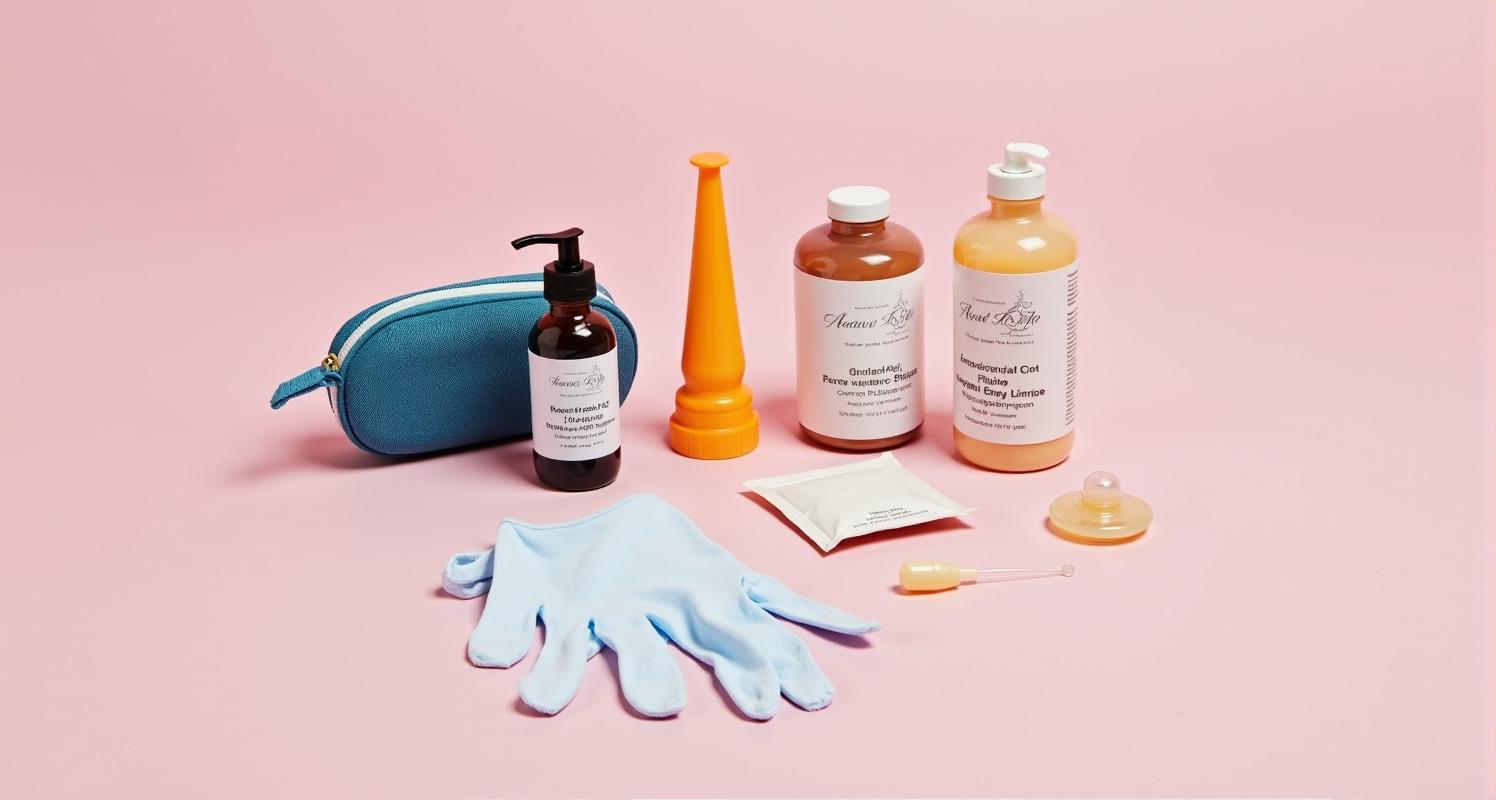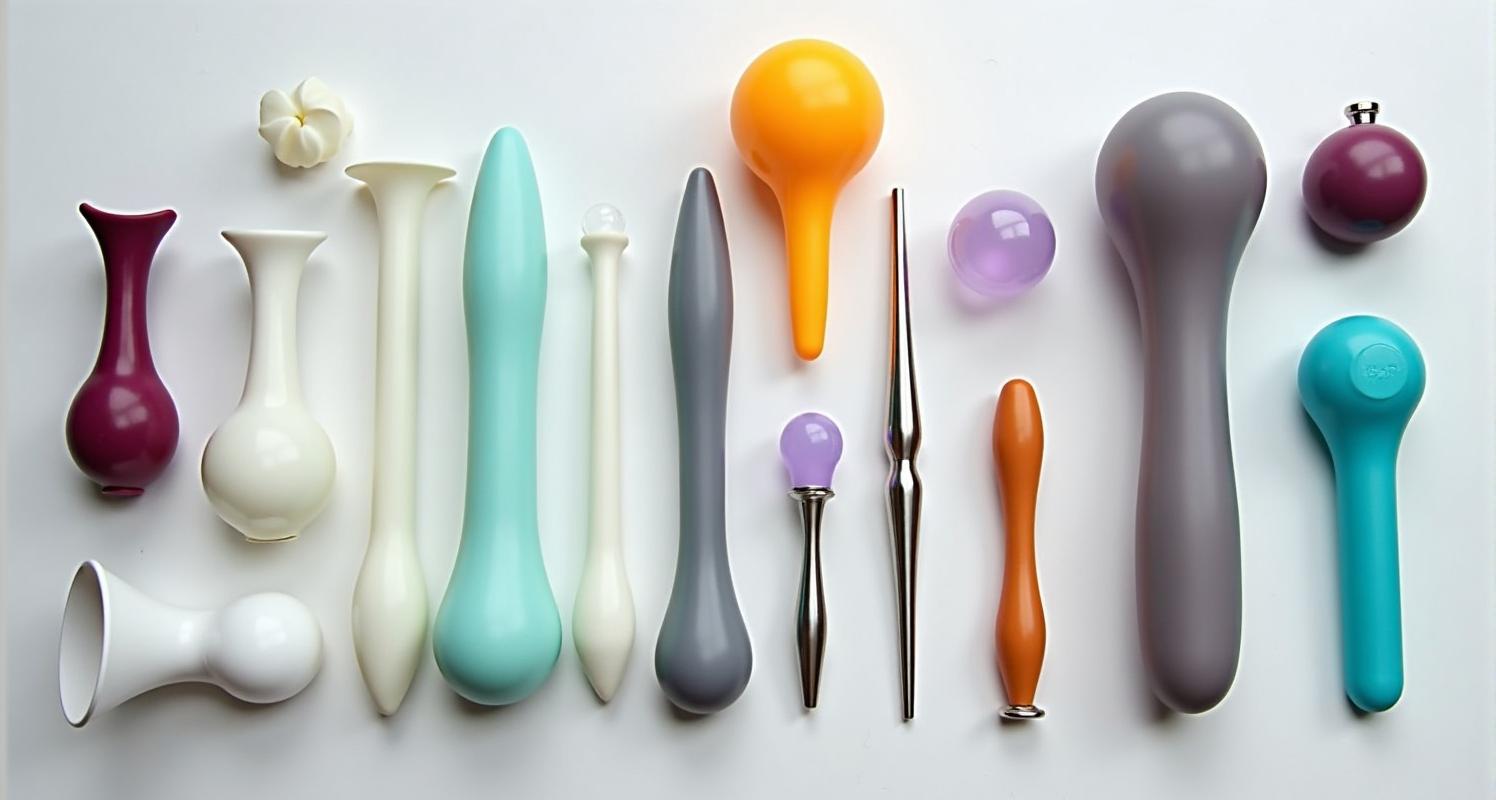choosing the right material for your anal dildo isn't just about preference—it's about your health, comfort, and ultimately, your pleasure. And trust me, after years of trial and error (and some awkward conversations with my doctor), I've learned that material matters more than you might think.

Why Material Choice Is Everything
Picture this: You wouldn't wear polyester underwear to a marathon, right? Same logic applies here. Your body has specific needs, and the material you choose can make the difference between "oh yes" and "oh no, never again."
The anal region is incredibly sensitive and absorbent. Unlike other parts of your body, it doesn't self-lubricate, which means whatever material you're using needs to play nice with both your body and your lube of choice. Choose wrong, and you're looking at irritation, bacterial growth, or worse—a very uncomfortable trip to the ER.
Breaking Down Your Material Options
Silicone: The Gold Standard
If anal dildos were smartphones, silicone would be the iPhone—reliable, user-friendly, and worth the investment. Here's why I'm team silicone:
- Body-safe and non-porous (bacteria can't hide in microscopic holes)
- Flexible yet firm (bends with your body's curves)
- Temperature-responsive (warms to your body heat)
- Compatible with water-based lubes
Pro tip: Look for medical-grade silicone. Yes, it costs more, but your body will thank you.

Glass: The Sophisticated Choice
Don't let the material fool you—we're talking borosilicate glass here, not your grandma's wine goblets. Glass anal dildo are like the Tesla of sex toys: sleek, innovative, and surprisingly practical.
| Pros | Cons |
|---|---|
| Ultra-smooth surface | Can be cold initially |
| Compatible with all lubes | Less forgiving for beginners |
| Easy to clean and sterilize | Risk of chipping if dropped |
| Can be heated or cooled | More expensive |
Stainless Steel: The Heavy Hitter
Remember that scene in Fifty Shades with the metal balls? Yeah, steel toys have that same luxurious, weighty feel. They're not for everyone, but if you like intensity, steel delivers.
What makes steel special: - Incredible for temperature play - Provides satisfying pressure - Lasts literally forever - Works with any lubricant
TPE/TPR: The Budget Option
Look, I'll be straight with you—these materials are like fast fashion. Cheap, accessible, but not built to last. They're porous, which means they can harbor bacteria no matter how well you clean them.
If you must go this route: - Always use a condom over the toy - Replace frequently - Never share with partners
The Materials to Absolutely Avoid
Hard pass on: - Jelly rubber (contains phthalates) - PVC without phthalate-free labeling - Mystery materials from sketchy websites - Anything that smells strongly of chemicals
I once bought a cheap toy that smelled like a tire factory. Lesson learned: if it smells toxic, it probably is.

Matching Material to Your Experience Level
Beginners: Start with Silicone
Why? It's forgiving. Silicone has just enough give to make insertion comfortable while maintaining enough firmness for stimulation. Plus, it's virtually impossible to injure yourself with quality silicone.
Intermediate Users: Experiment with Glass
Once you're comfortable with the basics, glass opens up new sensations. The rigidity provides more targeted stimulation, and the smooth surface means you need less lube.
Advanced Players: Go for Steel
Steel is for those who know exactly what they want. The weight provides unique internal pressure, and the temperature play possibilities are endless.
The Lube Connection
Here's where things get tricky. Different materials require different lubes, and using the wrong combination is like mixing oil and water—literally.
| Material | Compatible Lubes | Avoid |
|---|---|---|
| Silicone | Water-based, oil-based | Silicone-based |
| Glass | All types | None |
| Steel | All types | None |
| TPE/TPR | Water-based | Oil-based |
Caring for Your Investment
You wouldn't buy a designer jacket and throw it in with your gym clothes, right? Same principle here.
Silicone care: - Wash with mild soap and warm water - Boil for 3-5 minutes to sterilize - Store in a breathable bag
Glass and steel care: - Can be sterilized in boiling water - Dishwasher safe (top rack, no other dishes!) - Store wrapped in soft cloth
Making Your Final Decision
So which material is right for you? Ask yourself:
- What's my experience level?
- What's my budget?
- What sensations am I seeking?
- How important is easy maintenance?
Remember, this isn't about what's trending on TikTok or what your friend swears by. It's about what works for your body.
The Bottom Line (Pun Intended)
Choosing the right anal dildo material isn't rocket science, but it does require thought. Your body deserves quality, whether that's the versatility of silicone, the elegance of glass, or the intensity of steel.
Start with body-safe materials, invest in quality over quantity, and always—always—listen to your body. The right material won't just enhance your pleasure; it'll keep you safe and coming back for more.
Ready to make your choice? Remember: good things come to those who research. Your perfect match is out there—you just need to know what to look for.



